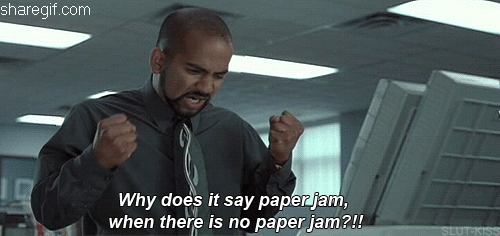 If you’re looking into a new technology for your small business, you know every choice revolves around cost. Making the switch from paper to mobile forms may seem daunting, but looking at the dollars behind the material, storage, and time cost of paper vs. mobile forms can help you decide what’s best for your business. The three categories have been broken down by numbers in Repsly’s Cost Analysis Marketing Brief. Below you will find an overview of the associated costs of both paper and mobile forms respectively.
If you’re looking into a new technology for your small business, you know every choice revolves around cost. Making the switch from paper to mobile forms may seem daunting, but looking at the dollars behind the material, storage, and time cost of paper vs. mobile forms can help you decide what’s best for your business. The three categories have been broken down by numbers in Repsly’s Cost Analysis Marketing Brief. Below you will find an overview of the associated costs of both paper and mobile forms respectively.
Material Costs- Paper vs. Mobile
The average office worker in America uses about 10,000 sheets annually. If your business has 15 field reps and two back-office managers, that’s 170,000 pieces of paper per year. And don’t forget the printing of those pages. The average cost of a printed page is now a little over three cents. See how much your business is spending on paper using this calculator.
After you leave paper behind, you have to consider a different kind of hardware for your employees. Namely, smartphones or tablets. Utilizing a BYOD (Bring-Your-Own-Device) strategy quickens the adaption period of new technology and significantly lowers material cost. Using a COPE (Corporate-Owned-Personally-Enabled) strategy allows for standardized technology, but can be expensive. Once a hardware choice has been made, software must be introduced. Different mobile CRM apps run anywhere from $30-$500 per year. Choosing an established app, rather than a custom made option, offers you peace of mind that your software won’t have to be constantly updated, interrupting field rep activities.
Storage Costs- Paper vs. Mobile
More and more offices are becoming virtual, and so are their forms. That might be because the cost of paper storage is adding up. Filing cabinets can be pricey, depending on your needs. Most run between $100-300. And that doesn’t even take into account the money you spend on office space to hold those cabinets.
Digital storage is generally done in the Cloud, an external place for mobile data. If your business adopts a mobile CRM software, it is likely that part of that material cost will cover Cloud abilities. If your business chooses to design a custom software, you may end up paying separately for Cloud services, which can cost anywhere from $5-500 a year.
Time Cost- Paper vs. Mobile
A survey done by TechnoMetrica found that about 50% of business owners who switched from paper to mobile forms said they had more time to focus on revenues. There is constant time cost involved with the printing, filing, and managing of paper. There is hardly any task that can be done faster with paper forms than mobile forms. That’s why businesses said, on average, they saved 11 hours of rep time and six hours of owner time by switching to digital forms in this study.
One time-consuming aspect about the switch to mobile forms is often overlooked- the time is takes to train employees on the new hardware and/or software. Depending on your hardware choice (BYOD vs. COPE), this time cost could be significant. It is important to remember, though, that while the time cost of paper will continue to be present, the time cost of digital (training employees) is a one-time investment.
Summing It Up
It’s clear from this business cost analysis that mobile forms save your organization time and encourages efficiency. However, looking through the bottom line costs of each choice can help determine what makes sense for your business. For a deeper look into the hard numbers of Paper vs. Mobile, see Repsly’s Cost Analysis Marketing Brief.



 If you’re looking into a new technology for your small business, you know every choice revolves around cost. Making the switch from
If you’re looking into a new technology for your small business, you know every choice revolves around cost. Making the switch from
.png?width=480&height=252&name=PRESS%20RELEASE-2%20(4).png)

